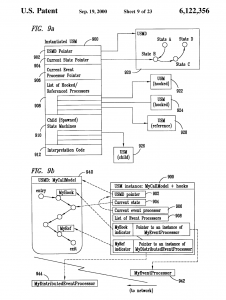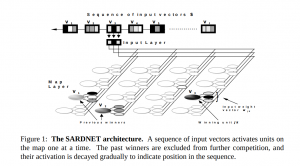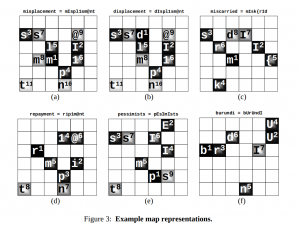Telecom Patents: Services
“Long Distance Phone Tag”
A phone service for preventing missed connections and “phone tag” that commonly happens and, in particular, helps people contact people who are traveling is disclosed. A user registers the phonenumber at which he or she is currently located with a service controller which maintains a database of such user registrations. The user may also prioritize the identities of other users with whom he or she wishes to contact. When the service controller determines that a first user wishes to get in contact with a second user and that both users have current locations registered in the database, then the service controller will call both users and connect them to each other.

https://patents.google.com/patent/US5987113A
Telecom Patents: COSMAS
These patents cover three different aspects of a software-based state machine space called COSMAS, which is an acronym for COncurrent State MAchine Space, playing off the term “cosmos”. This work was done for Nortel back in the 90’s, and provides a mechanism for defining and dynamically deploying asynchronous “state machine” features to a telecom switch (or any computer system, really).

“Universal data structure for use with a concurrent state machine space in a telecommunications network”
https://patents.google.com/patent/US6052455A
“Universal state machine for use with a concurrent state machine space in a telecommunications network”
https://patents.google.com/patent/US6260186B1
“Concurrent state machine space in a telecommunications network”
https://patents.google.com/patent/US6122356A
Neural Network Publications
“SARDNET: A Self-Organizing Feature Map for Sequences”
This neural network architecture is a variation on a Kohonen self-organizing neural network that incorporates a sort of short term memory that “fades” over time, meant to be analagous to biological memory. This network was successfully applied to speech pattern (word) learning and recognition.


Daniel L. James and Risto Miikkulainen Department of Computer Sciences The University of Texas at Austin Austin, TX 78712
Abstract: A self-organizing neural network for sequence classification called SARDNET is described and analyzed experimentally. SARDNET extends the Kohonen Feature Map architecture with activation retention and decay in order to create unique distributed response patterns for different sequences. SARDNET yields extremely dense yet descriptive representations of sequential input in very few training iterations. The network has proven successful on mapping arbitrary sequences of binary and real numbers, as well as phonemic representations of English words. Potential applications include isolated spoken word recognition and cognitive science models of sequence processing.
http://nn.cs.utexas.edu/downloads/papers/james.sardnet.pdf